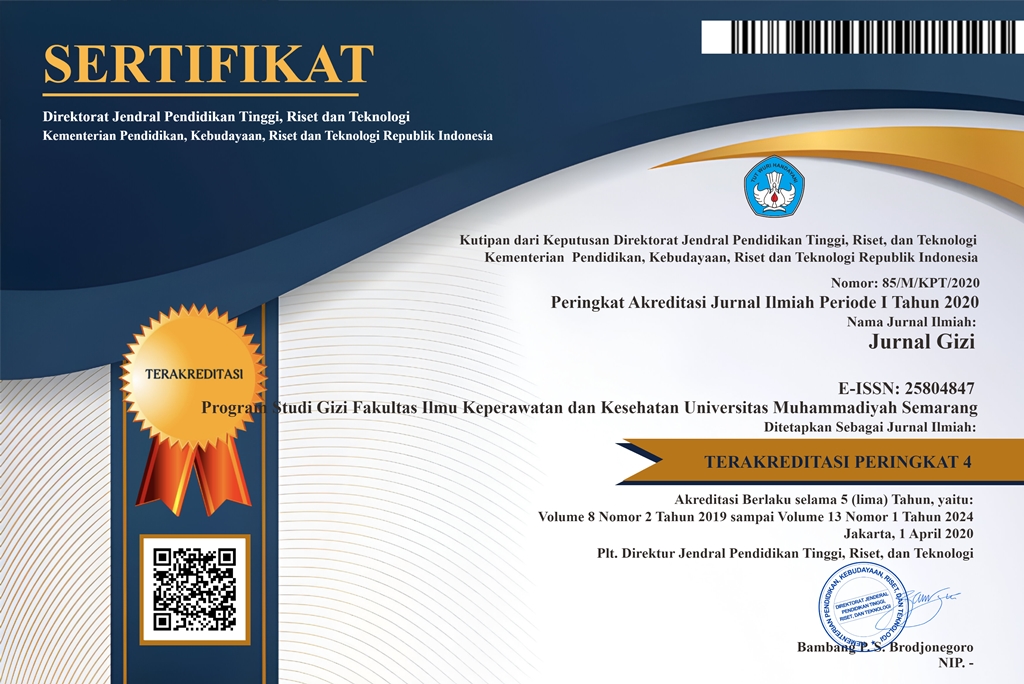Perbedaan metode pembuatan VCO antibakteria terhadap sifat Fisikokimia, dan uji organoleptik, Antibakteri VCO terhadap Bakteri Staphylococcus Aureus
(1)
(2)
(*) Corresponding Author
Abstract
Wounds have slowed healing due to the formation of biofilms, which are the surface formation of bacterial cells that are covered by the polymeric substance. Staphylococcus aureus is a gram-positive bacteria that play a role in producing
multilayer in biofilms and is very easy to resistant to antibiotics. VCO has the ability as ana anti-bacterial content based on lauric acid and kaprat acid. This study used experimental Quasy with a mixed Methode method. VCO is made with 3 methods, fishing, heating and mixing on physicochemical test. Physicochemical test results show, the highest water content is found in the VCO heating, the same three-type weight, the highest peroxide number is in the VCO mixing and the highest free fatty acids on the VCO fishing. The results of antibacterial test with Kirby-Baur method There is no barrier zone from the 3 types of VCO. VCO used as a topical is VCO fishing.
The results of a test analysis of the results of observations in patients as much as 15 people for 9 days in 3 treatments with chronic wounds obtained p < 0.05 (0.000) which means during the treatment that the wound condition is better.
Keyword : Organoleptic, Staphylococcus aureus, Physicochemical, VCO
Full Text:
PDFArticle Metrics
Abstract view : 944 timesPDF - 388 times
DOI: https://doi.org/10.26714/jg.9.1.2020.124-130
Refbacks
- There are currently no refbacks.
Diterbitkan oleh: Program Studi Gizi (D3 dan S1)
Fakultas Ilmu Keperawatan dan Kesehatan
Universitas Muhammadiyah Semarang
Sekretariat: Jl. Kedungmundu Raya No. 18 Semarang
Contact Person : Hapsari Sulistya Kusuma, S.Gz, M.Si (+62 85 6 41 536 553)

This work is licensed under a Creative Commons Attribution 4.0 International License.









.png)
.png)